Vowel Recognition Normal Worksheets for Ages 5-8
13 filtered results
-
From - To
Our Vowel Recognition Normal Worksheets are perfect for young learners ages 5-8. These engaging and educational printables help children identify and differentiate between vowels in a fun and interactive way. Each worksheet is designed to strengthen foundational reading skills, featuring activities like matching, coloring, and tracing. By practicing with these worksheets, kids will build the confidence needed for fluent reading and effective communication. Ideal for both classroom settings and at-home learning, our worksheets make vowel recognition a breeze, paving the way for academic success. Embrace joyful learning with our expertly crafted resources!


Long and Short Vowel Match up Reading Worksheet
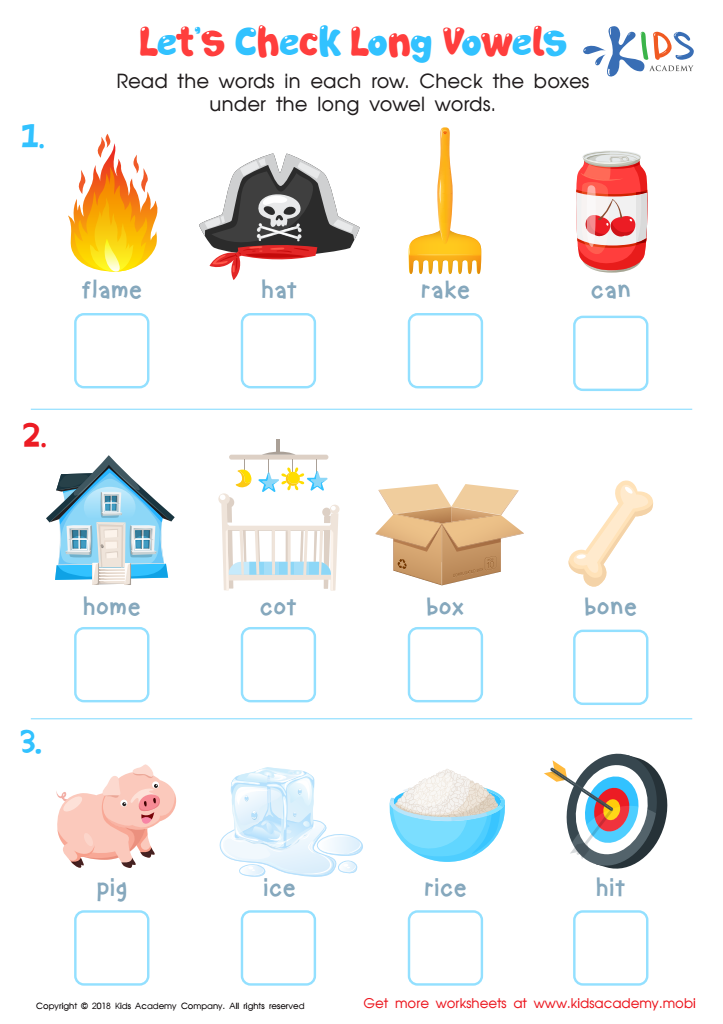

Let's Check Long Vowels: Assessment Worksheet
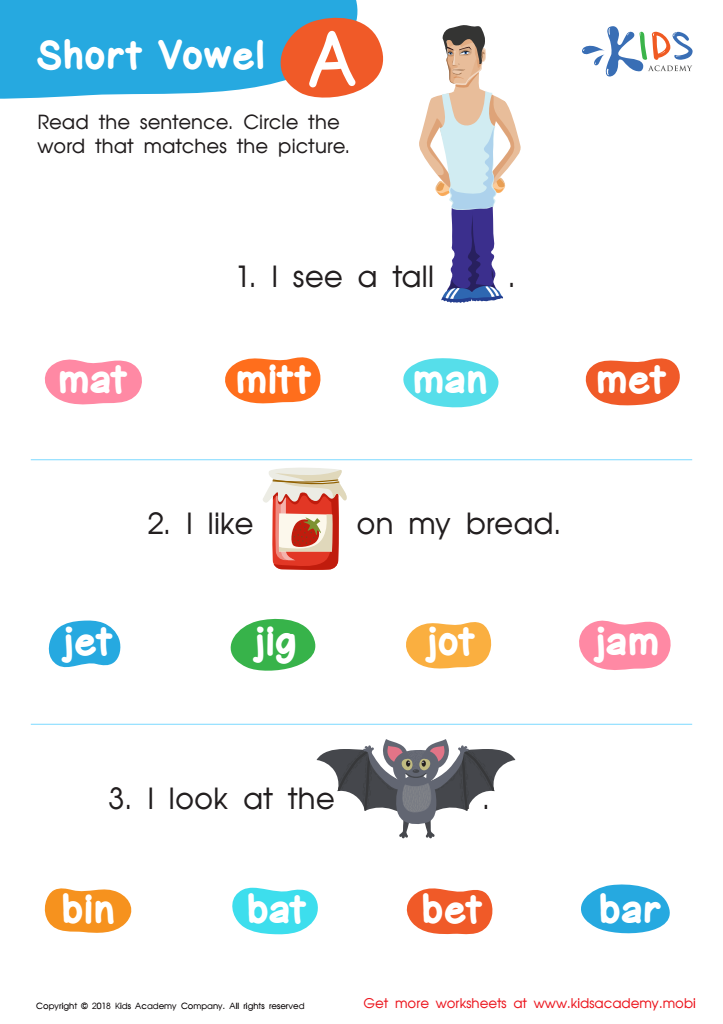

Short Vowel /a/ Worksheet


Short Vowels /e/, /i/, and /u/ Worksheet
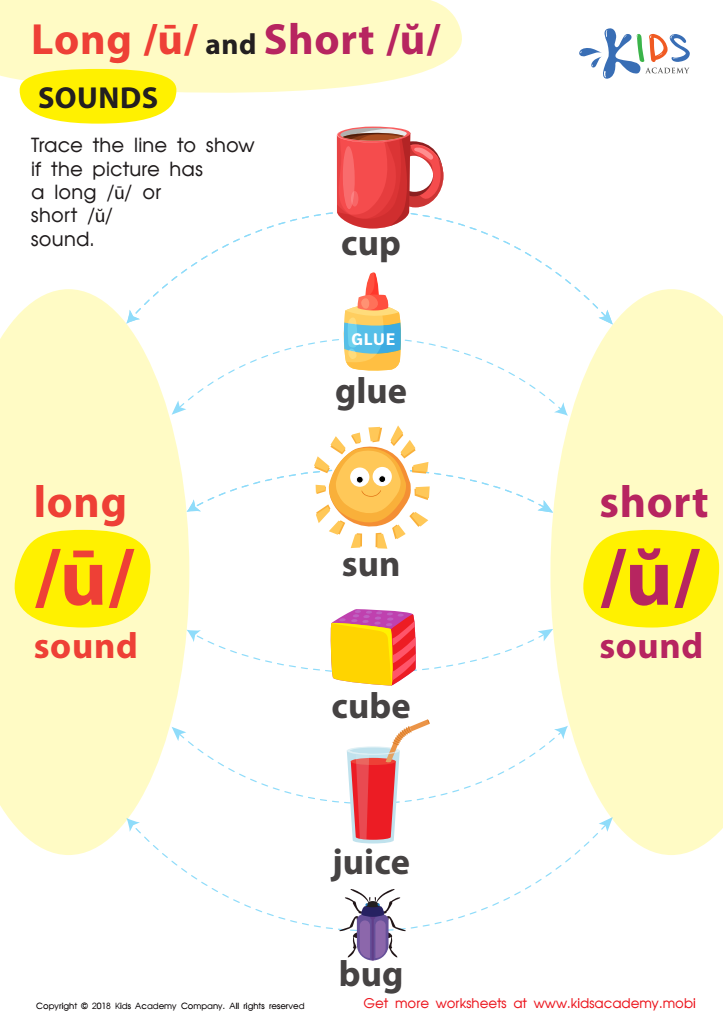

Reading: Long U and Short U Sounds Worksheet
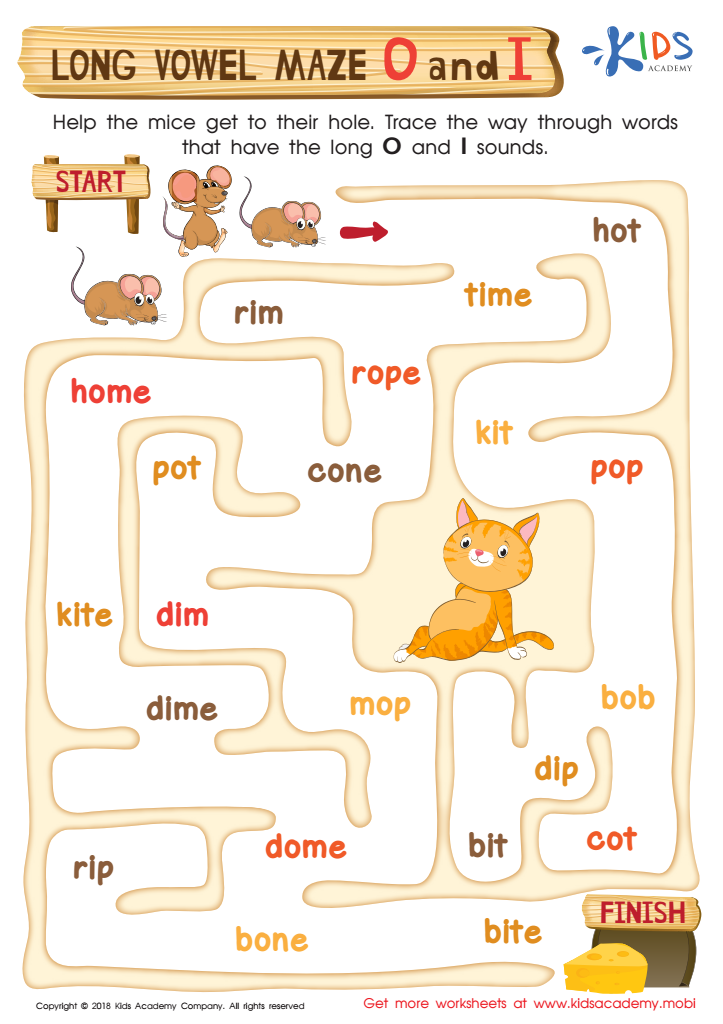

Long Vowel Maze /o/ and /i/ Worksheet


Short Vowel Eggs Worksheet
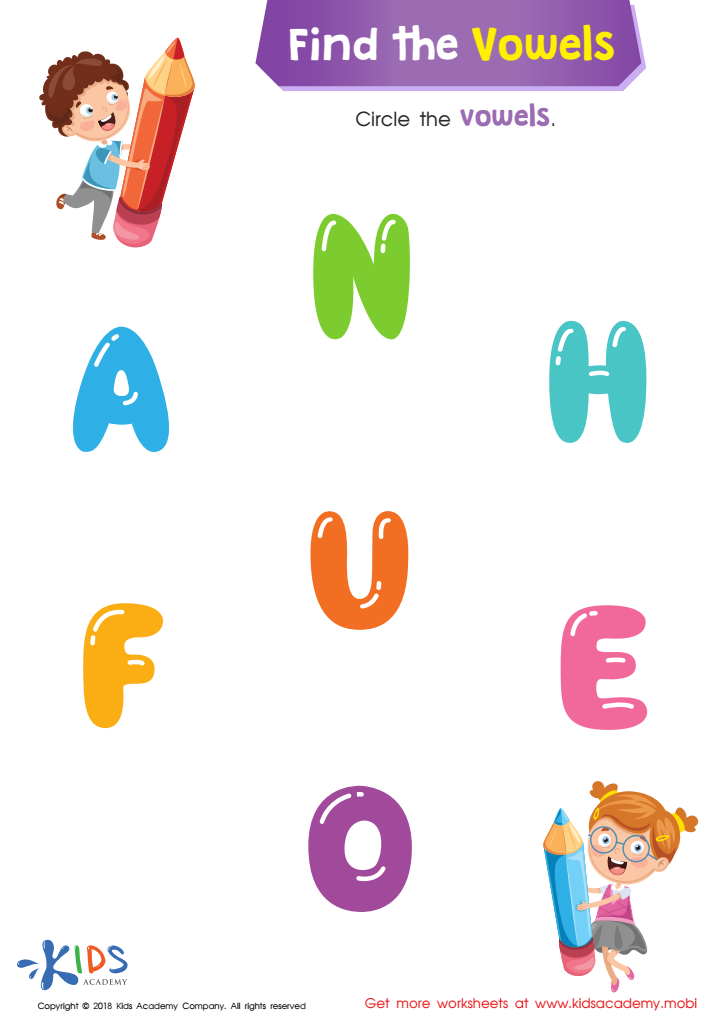

Find the Vowels Reading Worksheet
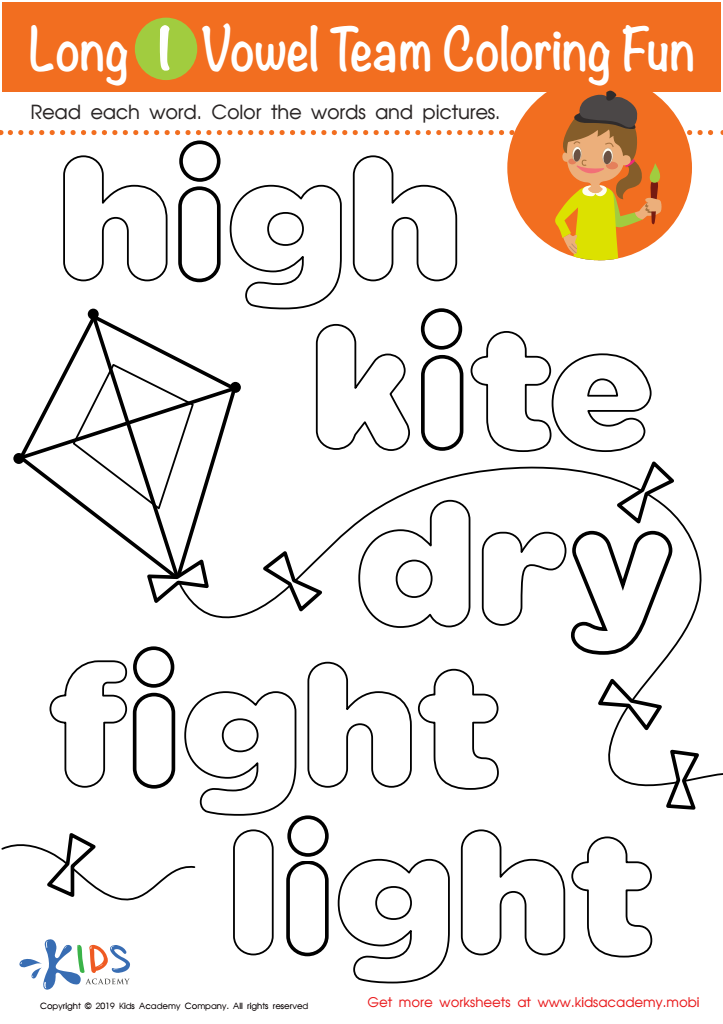

Long I Vowel Team Coloring Worksheet
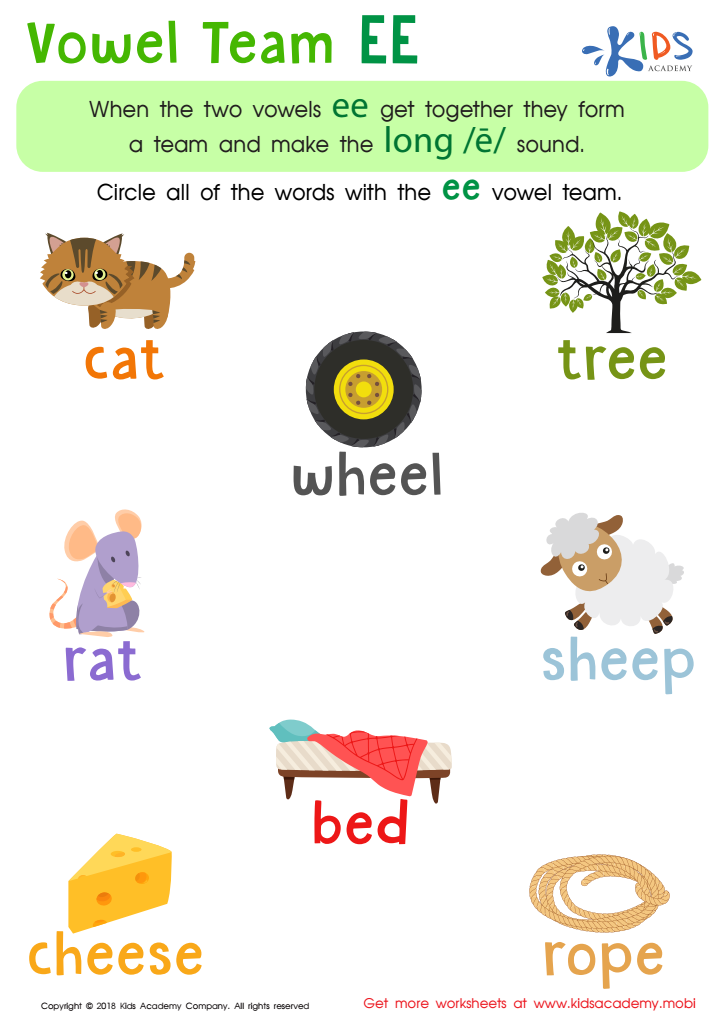

Reading: Vowel Team EE Worksheet
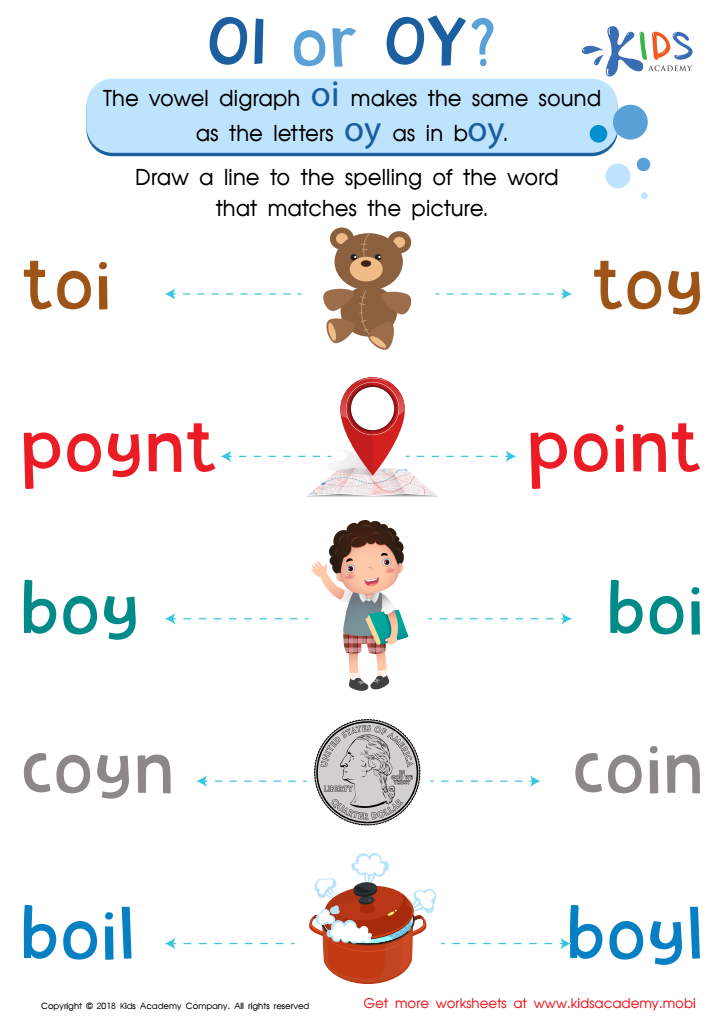

Reading: OI and OY Worksheet
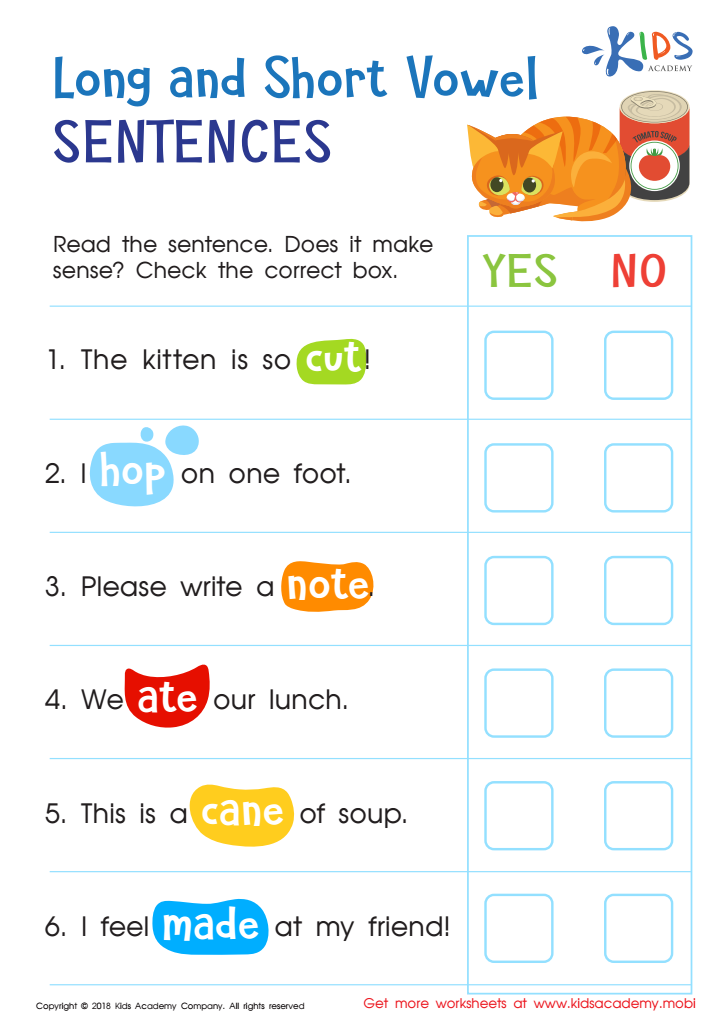

Long and Short Vowel Sentences: Assessment Worksheet
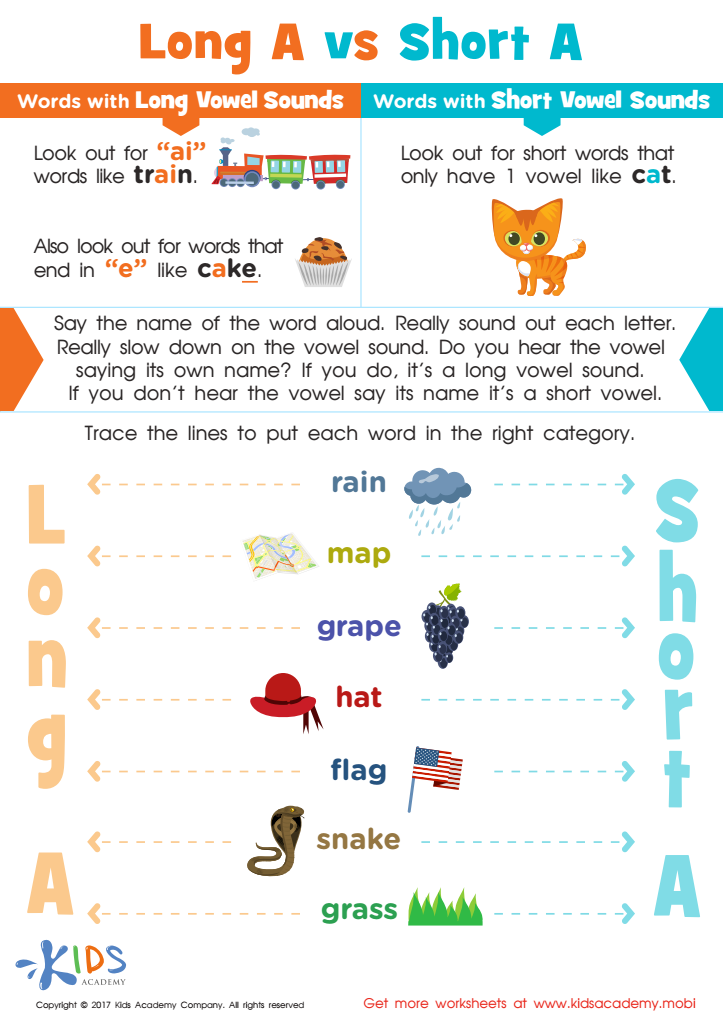

Long and Short Vowel A Spelling Worksheet
Vowel recognition is a fundamental skill for early readers, ages 5-8, and it's crucial for both parents and teachers to understand its importance. Vowels form the core of most words, help dictate pronunciation, and influence word meaning. Mastering vowel sounds ensures young learners can decode (read) and encode (spell) words accurately. This phase is often referred to as Vowel Recognition Normal, indicating a typical developmental milestone.
Without strong vowel recognition skills, children may struggle with reading fluency and comprehension. Consider the word "cat" versus "cut." A child who can distinguish the vowel sounds can meaningfully differentiate between these words, aiding in contextual understanding. Sounding out vowels correctly helps them to read unknown words more efficiently.
Parents and teachers play a pivotal role by providing a rich educational environment. Engaging in activities like singing songs, playing phonics games, reading aloud, and making use of tools like flashcards or educational apps can reinforce these skills.
Early intervention and consistent practice enable children to become more confident readers, establishing a strong foundation for future academic success. Neglecting vowel recognition can result in literacy challenges, making early emphasis crucial for a child's lifelong learning journey. Thus, vowel recognition doesn't just affect reading—it boosts overall language development, making it a core educational priority.
 Assign to My Students
Assign to My Students















